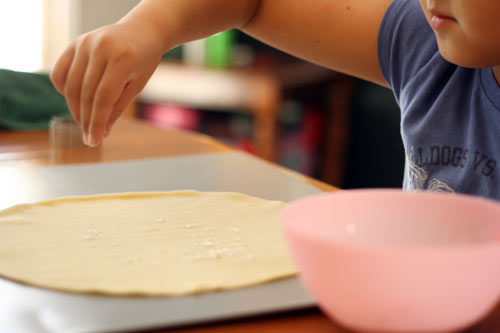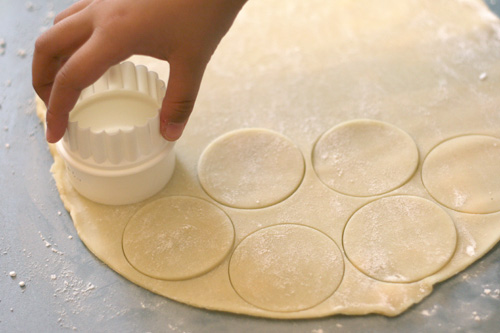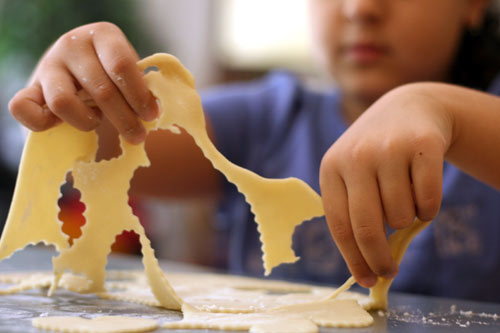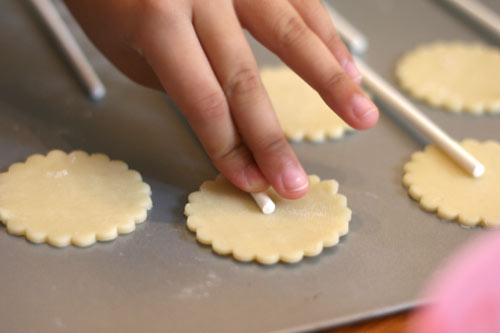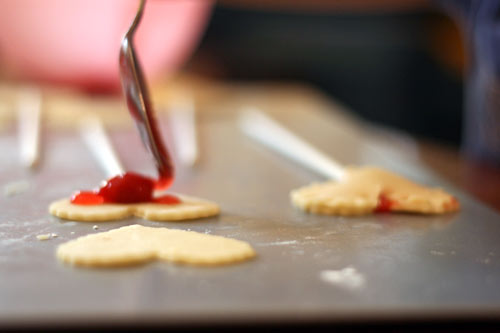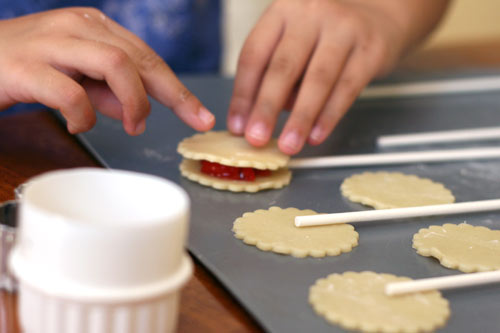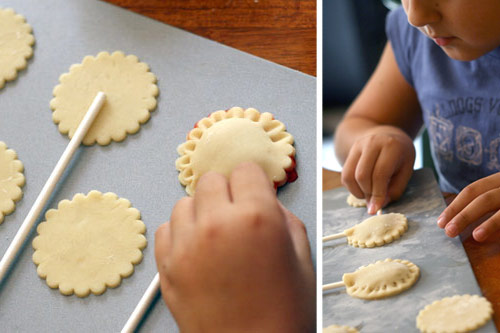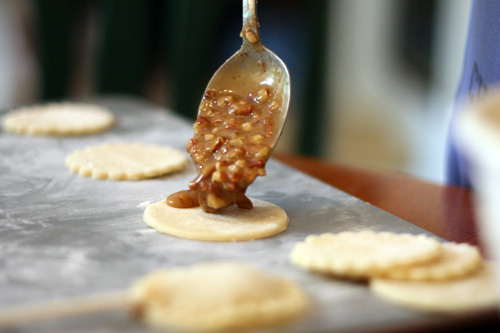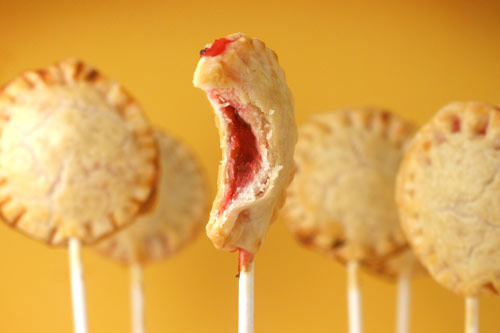What an awesome idea! You want to eat pie without the guilt and try different flavours without having a big slice....perfect reasons to make pie pops!


Bakerella's Pie Pops
The Pie Pops really are easy. And if you have a little one around, you don’t even have to lift a finger. They can do all the work and tell you how to make them, too.
The following commentary is from my sweet “little miss bakerella.” She talked and I typed. So here goes… instructions in italics from an eight year old.
I’m getting ready to show you how to make your very own pie pops. They’re not made from candy, but they’re made out of dough. It’s gonna be a baketastic time!
Sprinkle a pinch of flour onto the dough.
Now we flop it onto the other side and do the cookie cutters.
ME: Dusting with a little bit of flour on both sides will make the dough easier to work with and move around.
Now we do the first cookie cutter. It feels great to do the first one.
There’s a lot more to be done, but still, it’s worth it.
There’s a lot more to be done, but still, it’s worth it.
I’m trying to get close to the other hearts because it will give us more space for the cookie cutters.
ME: If you’re careful you can get enough for 8-9 pie pops from a 9-inch pie crust.
It’s time for the circles . Remember, I’m doing the same thing except it will be easier.
. Remember, I’m doing the same thing except it will be easier.
ME: The circle shapes are easier to assemble than the heart shapes because they give you more room in the center for the filling.
This is gonna be all circles here.
Time to get off the scraps. We don’t want those Nuh-uh! You can use the scraps for a different piece of dough.
ME: What she means is… you can save the dough scraps. Roll flat and re-use.
Now it’s time for pressing down the lollipop sticks .
.
Now, get only one cherry and a little bit of juice. Put it right in the center or it will squeeze out way too much.
ME: pie filling = juice :)
Ummm… as I said before, don’t put too much juice or it will squeeze out because you got to press down or it won’t bake very good in the oven.
ME: We used rolled pie crusts and canned cherry pie filling to play with these. Easy and fun for both of us.
It’s time for sealing it. What you do is, you break a lollipop stick into a small piece and you press it down all around it. (But not too hard.)
ME: Using a short piece of lollipop stick helps you not to mess up the neighboring pie pops when you seal the two pieces of dough together.
Now you take a baking brush and you crack an egg. Don’t put the egg yolk in. Put the egg whites in a little bowl. Get the brush and put some of the egg whites on it. Now brush it onto the front of the dough.
ME: Brush the tops of the pies with egg whites.
Now we got some pistachios and we put it onto the dough, instead of cherry. But I must say, it was mighty tasty.
ME: Ha! Guess you can tell she doesn’t eat too many pecans or … pistachios either for that matter. We did make a few pie pops using a pecan pie filling that I whipped together, but I still need to finesse the ingredients on that one before I post a recipe.
The pops baked in the oven on 375 for about 12-15 minutes or until the tops started to brown. Remove, cool and enjoy!
I thought I would love these more than I did. But… (and I can’t believe I’m saying these words) … They needed more fruit! A little too much pastry to pie filling for me. But still good, still fun to do and still super-cute!

Here are a few more of those stunning photographs from

Blackberry

Apple

Pumpkin


